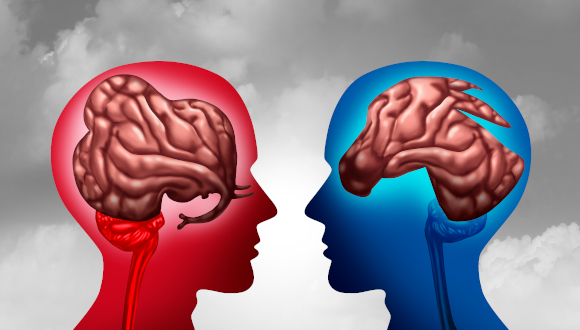MRI scans reveal that differences in brain activity can predict political orientation

TAU study conducted while politically-involved participants watched campaign ads
Support this researchA first-of-its-kind study from Tel Aviv University (TAU) found that the brains of “right-wing” and “left-wing” subjects reacted differently as they watched campaign ads tailored to a specific political point-of-view, even in brain regions involved in vision and hearing. The responses in those regions were unique enough to accurately predict an individual’s political views.
The study, conducted during the recent Israeli election season, was led by Noa Katabi, a research student in the lab of Dr. Yaara Yeshurun of TAU’s School of Psychological Sciences and the Sagol School of Neuroscience. The study was published in the January 4, 2023, issue of the Journal of Neuroscience.
Using magnetic resonance imaging (fMRI), the researchers scanned the brains of dozens of politically involved participants while they watched campaign ads and speeches by parties from both ends of the political spectrum, just before one of the last rounds of Israeli elections. They found that self-identifying right-wing participants had synchronized brain responses (meaning their brain worked in a similar manner) as they watched the right-wing stimuli, while self-identifying left-wing participants had different synchronized brain responses as they watched the left-wing stimuli. This was true even for regions within the sensory, motor, and somatosensory cortices, which are responsible for vision, hearing, and movement.
During the study, participants watched video clips, including a neutral (in terms of political characteristics) video clip and different political campaign ads and political speeches by politicians from conservative and liberal blocs. The researchers were surprised to discover widespread partisanship-dependent brain activation and synchronization when right-wing individuals watched the videos of their political bloc, or when left-wing individuals watched the videos of left-wing politicians.
Interestingly, the researchers found that such partisanship-dependent differences in brain synchronization were not limited to “higher” areas of the brain, associated with interpretation and abstract thinking. Instead, these differences occurred in regions responsible for sight, hearing and even touch.
“The research clearly showed that the more the subjects were politically aligned with a certain group, the more their brain response was synchronized, including in motor and somatosensory areas, that is, those areas of the brain that are active when we move or feel things with our senses,” Dr. Yeshurun says. “In fact, we could tell if a certain individual was left or wight wing just by the brain’s response in these primary sensory areas.
“Intriguingly, it was not necessary to examine the activity in ‘higher’ brain areas involved in understanding why a certain character did something, or what that character thinks and feels, in order to predict participants’ political views. It could even be done by examining an area of the brain that is responsible for seeing or hearing,” Dr. Yeshurun continues. The researchers believe that this surprising finding is due to the fact that the participants they chose were politically involved, and was also due to the timing of the experiment — just a few weeks before the Israeli elections, when the political atmosphere was dramatically heightened.
“This is the first study to show political-dependent brain activity in early sensory and motor areas, and it can be said that at the most basic brain level, rightists and leftists in Israel literally (and not just metaphorically) don’t see and hear the same things,” Dr. Yeshurun concludes. “I think that if we try to understand how people who hold opposite political views to ours experience the world, we might be able to conduct a slightly more effective public discussion that can hopefully attenuate the current political polarization.”